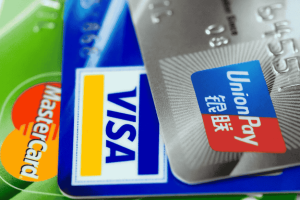Imagine the power of small, consistent changes that compound over time to create financial freedom. Consider Juan, a middle-income professional from Manila, who at first struggled with budgeting his expenses. After adopting several money-saving tricks—from renegotiating bills to optimizing his household energy use—Juan was able to build not just a modest emergency fund, but a long-term savings reservoir that now funds his personal goals. His journey shows that even slight modifications in daily habits can yield enormous benefits when compounded through persistence and diligence.
What Are Money-Saving Tricks? – Beyond the Basics

Money-saving tricks are not just about cutting expenses—they are a mindset shift toward a holistic understanding of your financial habits. They involve:
- Evaluating routine spending and identifying unnecessary costs.
- Using creative approaches to reduce expenses by leveraging technology and community resources.
- Implementing proactive planning to harness both short-term gains and long-term benefits.
- Recognizing behavioral patterns that lead to impulse purchases and learning to counteract them with thoughtful actions.
Why They Matter in Today’s Economy
In an era where the cost of living steadily increases and consumer debt surges, every cent saved can add up significantly over time. More importantly, these strategies can empower you to:
- Build security against unexpected financial hardships.
- Invest in future opportunities such as education, home ownership, or business ventures.
- Achieve a sense of control and confidence when it comes to managing personal finances.
In-Depth Money-Saving Strategies: A Multifaceted Approach
In this section, we’ll explore several strategies with detailed breakdowns, actionable insights, and case studies on how each trick can play a crucial role in your overall savings plan.
1. Cutting Down on Recurring Expenses: The Subtle Drainers
Recurring expenses can be deceptive; many subscriptions and memberships continue to drain your resources without delivering much value.
Detailed Analysis:
- Subscription Audit:
Delve into your monthly bank statements and make a note of every recurring charge. Beyond common services like Netflix or Spotify, consider less obvious ones such as premium email services, cloud storage plans, or even infrequently used mobile apps. - Utilization Check:
For each subscription, measure its usage rate and monthly cost. For example, if you’re paying $20 monthly for a magazine subscription you rarely read, ask yourself if the cost is justified, or if that money could be better used elsewhere. - Bundling Benefits:
Investigate whether these services can be bundled. Many providers or third-party services offer discounted rates if you subscribe to multiple services simultaneously.
Tip: Create a detailed spreadsheet that lists all subscriptions, their recurring fees, and an evaluation of their actual benefits to decide which ones to cancel or negotiate.
2. Mastering the Art of Negotiation: Turning the Tables
Negotiation is both an art and a science. Instead of passively accepting bills, proactive negotiation can yield significant savings.
Practical Steps:
- Utilities and Telecom:
Contact your service providers (internet, electricity, mobile) and inquire about any available discounts or loyalty rewards. Research competitor offers to use as leverage during your negotiation. - Insurance Premiums:
Regularly compare quotes from different insurers. Many customers are surprised that even a slight adjustment in their plan or shopping around for a new provider can reduce premiums by 10-20%. - Medical Bills:
If you receive an unexpectedly high medical invoice, ask for a detailed breakdown and discuss the possibility of setting up a payment plan or even negotiating a lower bill.
Case Study Example:
Sandra, a resident of Singapore, detailed how a single negotiation call to her mobile service provider resulted in a 15% reduction in her monthly bill. Over the span of a year, this small reduction added up to substantial savings that she later redirected into her savings account.
3. Embracing DIY and Home Cooking: Invest Time, Save Money
Dining out and hiring external services are among the quickest ways to burn through cash. Shifting towards a DIY mentality, especially in cooking and home projects, can generate profound savings.
In-Depth Look:
- Meal Planning:
Create weekly menus that incorporate seasonal ingredients and locally available produce. This method not only saves money but also introduces a healthier lifestyle and reduces food waste.- Action: Use meal planning apps that analyze your grocery list against your budget and even suggest recipes that minimize costs.
- Bulk Cooking & Preservation:
Cooking in bulk and then freezing portions can minimize the temptation to order takeout. Additionally, bulk purchasing reduces per-unit costs.- Action: Compare the price of bulk buying staples like rice, beans, or frozen vegetables against smaller packaged options.
- DIY Home Projects:
By learning basic home improvement skills via online tutorials, many minor repairs or decoration projects that would usually require professional help can be executed by yourself.- Action: Start with small projects, such as repainting a single room or assembling furniture, before gradually moving to more complex tasks.
4. Harnessing the Power of Digital Tools: Tech as Your Financial Ally
In today’s connected world, technology can serve as a catalyst for financial betterment by offering a suite of tools to track, compare, and optimize spending.
Advanced Tool Utilization:
- Budgeting Software:
Tools like Mint, YNAB (You Need A Budget), or PocketGuard can provide granular details about your daily transactions, categorize your spending, and set real-time alerts for overspending. - Coupon and Cashback Aggregators:
Use apps such as Honey, Rakuten, or Ibotta that automatically apply coupons during online shopping or offer cashback rewards. Over time, these savings accumulate and often exceed 5-10% of your total expenditure. - Price Comparison Engines:
Before making significant purchases, always consult price comparison websites. They aggregate data across multiple retailers to ensure you’re receiving the best possible deal. - Automated Savings:
Incorporate tools like Digit or Acorns that analyze your spending habits and automatically transfer a small amount of money into your savings based on your surplus cash flow.
Insight: Leveraging these digital tools requires some upfront effort to set up, but once integrated into your routine, they operate stealthily in the background, ensuring no opportunity for savings is missed.
5. Rethinking Transportation Costs: The Hidden Fuel Drain

Transportation is often one of the largest budget categories, but changes in habits can lead to impressive savings in this area.
Detailed Insights:
- Public Transportation and Car Alternatives:
Evaluate the cost-benefit of using public transit versus owning a personal vehicle. In many metropolitan areas, public transportation is not only cost-effective but also environmentally friendly.- Action: Consider investing in a monthly transit pass if it significantly reduces daily commuting costs.
- Carpooling and Ride-Sharing:
Organize a carpool system with colleagues or utilize ride-sharing apps that offer split fares. This not only diminishes fuel costs but also reduces maintenance expenses. - Biking and Walking:
For shorter distances, biking or walking can be an excellent alternative. They provide health benefits and eliminate fuel or parking fees.- Action: Map out your most frequent destinations and determine if part of your commute can be effectively covered by these methods.
- Maintenance and Efficiency:
If vehicle ownership is unavoidable, regular maintenance ensures your car operates at peak efficiency, thereby reducing unexpected repair costs and lowering fuel consumption.
A Comparative Snapshot: Detailed Savings Analysis
Below is an expanded table that outlines different expense areas with estimated potential monthly savings and strategic tips for each:
| Category | Detailed Potential Monthly Savings | Comprehensive Action Steps |
| Subscriptions | $15 – $70 | Audit recurring charges; cancel unused plans; negotiate package deals or bundle multiple subscriptions. |
| Dining Out | $70 – $200 | Plan weekly menus; prepare meals in bulk; compare grocery prices; avoid impulse restaurant visits. |
| Utilities & Bills | $30 – $100 | Call providers for discounts; switch to energy-efficient appliances; set up smart thermostats for better control. |
| Transportation | $40 – $150 | Use public transit; carpool; invest in fuel-efficient or hybrid vehicles; track and optimize routes. |
| Shopping & Retail | $25 – $100 | Use cashback apps and coupons; compare prices online; adopt a no-impulse buying policy; utilize secondhand options. |
Creative and Unconventional Saving Techniques
Beyond the traditional methods, consider these innovative approaches that many savvy savers have implemented successfully:
Bartering and Local Exchange Systems
- Concept:
Instead of spending cash, trade goods or services with neighbors or through online community groups. For example, exchange gardening services for tutoring sessions or handyman work. - Execution:
Research local community boards or social media groups dedicated to bartering. Establish clear terms to ensure mutual benefit. - Outcome:
This method not only reduces expenses but also builds a strong support network that champions sustainability.
Energy Efficiency and Eco-Friendly Practices
- Deep Dive:
Assess your home’s energy consumption. Replace outdated appliances with energy-efficient models, switch to LED lighting, and consider investing in renewable energy solutions where feasible. - Long-Term Impact:
Initial investments in energy efficiency often pay for themselves in a few years through lower utility bills. Additionally, these practices contribute to a more sustainable environment. - How to Start:
Have a professional energy audit conducted to identify areas for improvement and prioritize upgrades.
Upcycling and Secondhand Shopping
- Philosophy:
Instead of buying new, look for quality secondhand items or refurbish old products. Upcycling can turn discarded items into valuable household goods. - Practical Examples:
Renovate and decorate your home with repurposed furniture, or purchase lightly used items from thrift stores, thereby saving money and reducing waste. - Resource Tip:
Explore online marketplaces, local garage sales, and community swap events to find attractive deals on pre-loved items. - Integrated FAQ: In-Depth Answers to Your Burning Questions
Frequently Asked Questions (FAQ)
Q: How much can I realistically save using these money-saving tricks?
A: Savings vary widely depending on your current spending habits and the number of strategies adopted. With diligent application, many individuals see monthly savings ranging from $100 to over $500 – and over time, these savings can accumulate into significant amounts that can be channeled towards investments or emergency funds.
Q: Which saving strategy should I start with if I feel overwhelmed?
A: Begin with auditing your subscriptions. This is often the simplest area to improve, and it involves a one-time evaluation that can quickly reveal hidden drags on your budget. Once you gain momentum, expand into negotiating bills or leveraging digital tools.
Q: What if I struggle with discipline in tracking my expenses?
A: Harness technology to your advantage. Use budgeting apps with alerts and automated reports. Many modern tools not only track spending but also provide behavioral insights, nudging you towards smarter financial habits.
Q: Can these tricks benefit diverse income levels?
A: Absolutely. These strategies are scalable. Whether you’re on a limited budget or have more disposable income, small savings consistently applied can lead to a transformed financial reality over time.
Your Journey Toward Lasting Financial Health

Adopting in-depth money-saving strategies is about more than just trimming expenses—it’s about developing a mindset that values every dollar and recognizes the compound power of responsible choices. By diving deep into your spending habits, employing digital tools, and embracing unconventional methods like upcycling or bartering, you’re laying the groundwork for long-term financial stability and growth.
Now is the time to take stock of your financial habits, make a detailed plan, and implement these strategies one step at a time. Reflect on your daily routines, set achievable goals, and celebrate small victories that keep you motivated. Remember, every mindful purchase or carefully negotiated bill contributes to a future of financial freedom.









